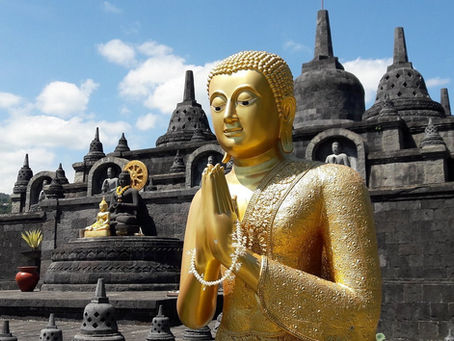top of page

GLOBAL SHANANIGANS

Search


Chiang Rai’s Blue Temple - Wat Rong Suea Ten
Wat Rong Suea Ten, known as the Blue Temple, commands attention with its striking sapphire and gold tones, a bold statement in Chiang Rai’s spiritual landscape. Finished in 2005, it rises on the site of a long-abandoned shrine, quietly reclaiming a space rich in history. Local artist Phuttha Kabkaew envisioned a temple that honours the elegance of traditional Buddhist art while pushing it into a contemporary realm, creating a design that feels both rooted in heritage and unmi
Shannon


Tiger Cave Temple - Wat Tham Suea
Hidden deep within the forest, the Tiger Cave Temple was founded in 1975 by a devoted monk seeking refuge from the world’s distractions. Drawn to the untouched serenity of the jungle, he discovered a secluded sanctuary where the whispers of the trees and the stillness of the air created the perfect environment for deep meditation. Amid shadowed caves and quiet trails, the temple rose as a place where nature, legend and spiritual devotion converge.
Shannon


Wat Phan Tao - Temple of a Thousand Kilns
Tucked in the heart of Chiang Mai’s ancient walled city, Wat Phan Tao is a hidden gem often overlooked beside the towering Wat Chedi Luang. Its quiet teakwood halls exude history and calm, a rare glimpse into 14th-century life during the Mangrai Dynasty. Originally built as a residence for local monks rather than a grand temple, it invites visitors to step back in time and soak in a serene, meditative atmosphere.
Shannon


Brahmavihara Arama Buddhist Monastery
Perched 300 meters above Northern Bali’s hills, Brahmavihara Arama is the island’s largest Buddhist monastery, offering breathtaking views over rice terraces and the Bali Sea. Though built in the 1970s, this tranquil sanctuary has quickly become a must-visit spiritual retreat away from the usual tourist paths.
Shannon


Wat Phra Singh - Temple of the Lion
Shrouded in centuries of legend, Wat Phra Singh rises in the heart of Chiang Mai’s Old City as a sanctuary of faith and mystery. Built in 1345 under Lanna King Phayu, it was created to guard a sacred Buddha relic and cradle the ashes of his father, linking royal legacy with divine purpose. Known as the Monastery of the Lion Buddha, its golden halls still echo with the chants of monks and novices drawn from across Southeast Asia, drawn by whispers of ancient power and the endu
Shannon


Sacred Tombs of The Pagoda Forest
Located at the base of Mount Shaoshi in Henan Province, the Pagoda Forest at Shaolin Temple is a sacred necropolis within the broader monastery complex. With its origins tracing back to 618 AD during the Tang Dynasty, the forest is home to over 240 stone and brick pagodas, each serving as a tomb or memorial for esteemed monks, abbots and martial art masters.
Shannon


Shaolin Monastery - The Birthplace of Kung Fu
The Shaolin Monastery was founded in 495AD during the Northern Wei Dynasty by Emperor Xiaowen to accommodate an Indian monk named Batuo. But it wasn’t until a second Indian monk, Bodhidharma arrived around 527AD that the legends really began. Bodhidharma, considered the father of Zen Buddhism, is said to have meditated in a cave near the temple for nine years, facing a wall until he achieved enlightenment.
Shannon


Baoguo - Temple of Divine Mountain
Situated at the foothills of Mount Emei, the Baoguo Temple serves as a gateway to one of China's Four Sacred Buddhist Mountains and stands as testament to the rich history and spiritual heritage of the region. Originally founded around 100AD, the current temple complex underwent extensive restoration during the Ming Dynasty in the 16th century, under the watchful eye of Emperor Kanxi.
Shannon
bottom of page